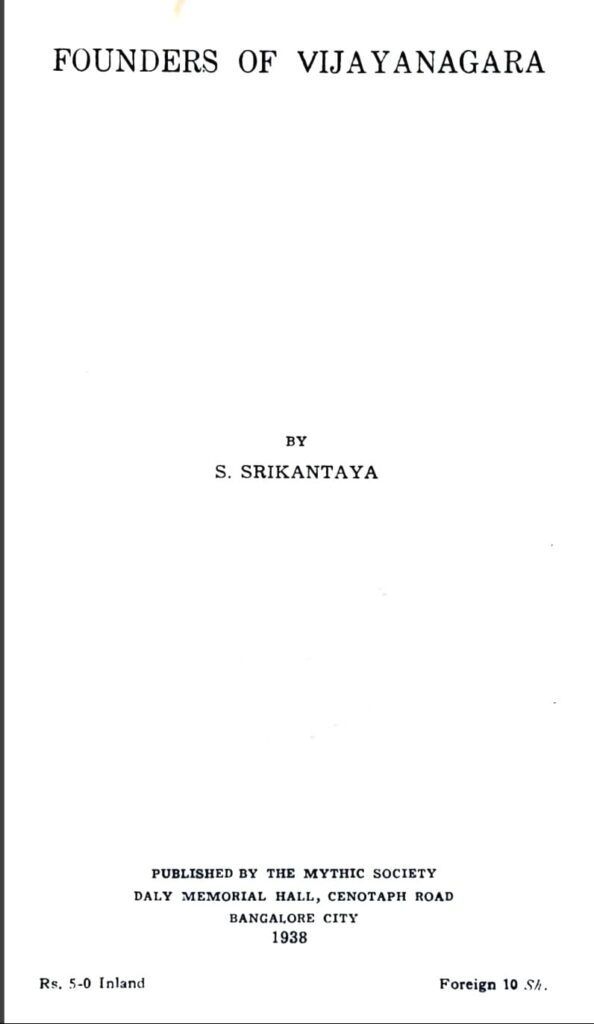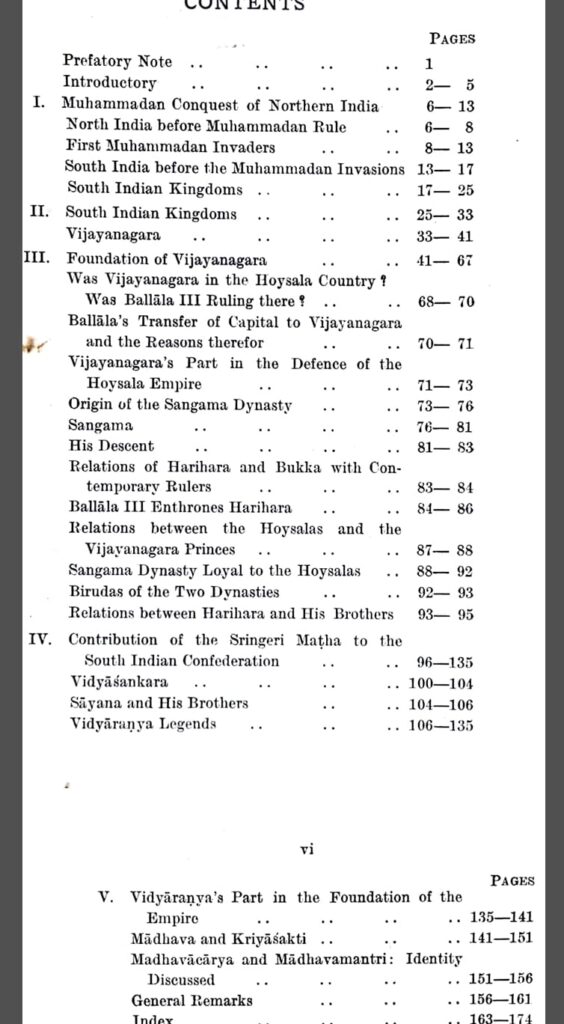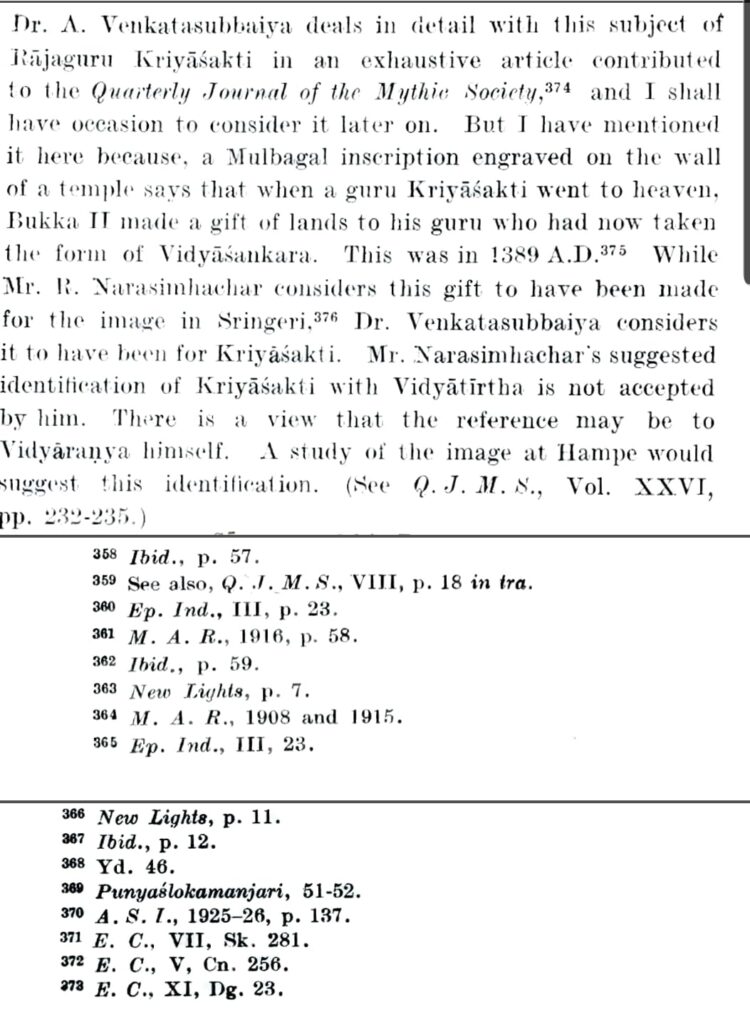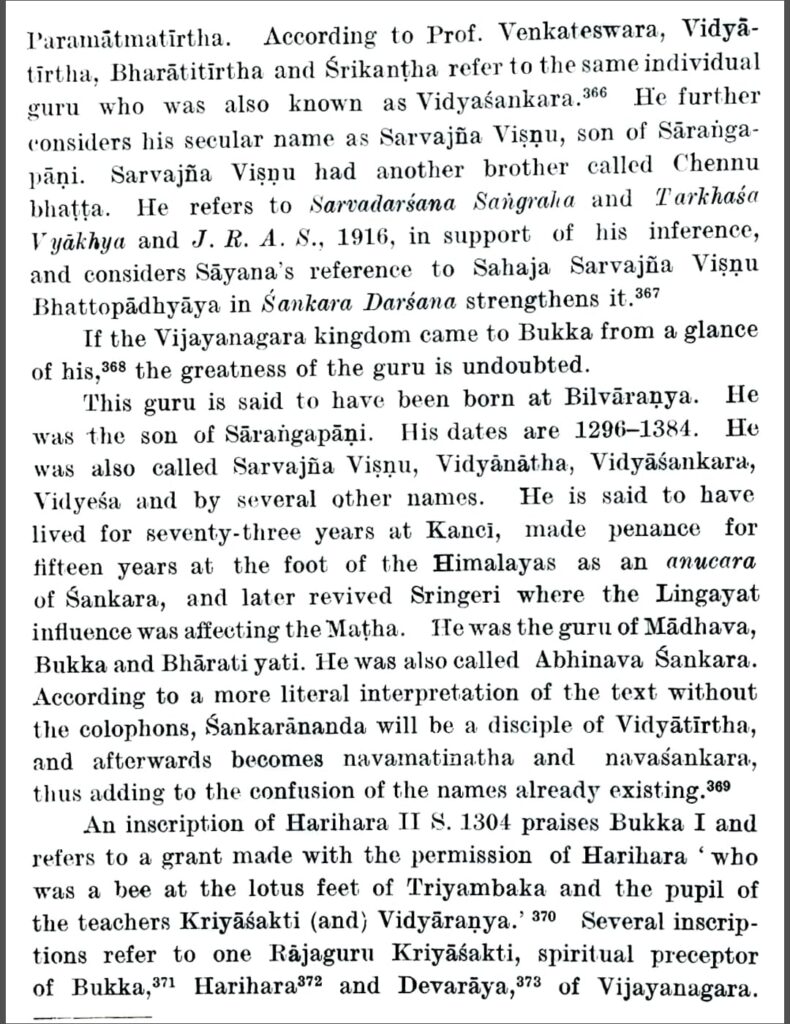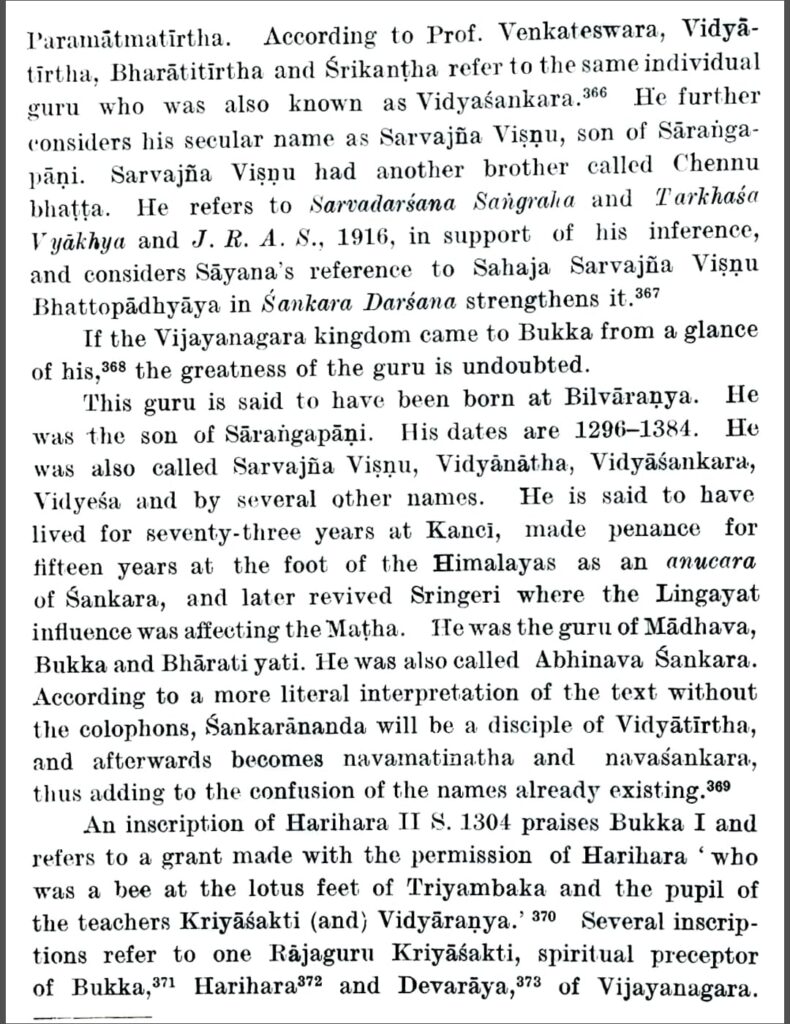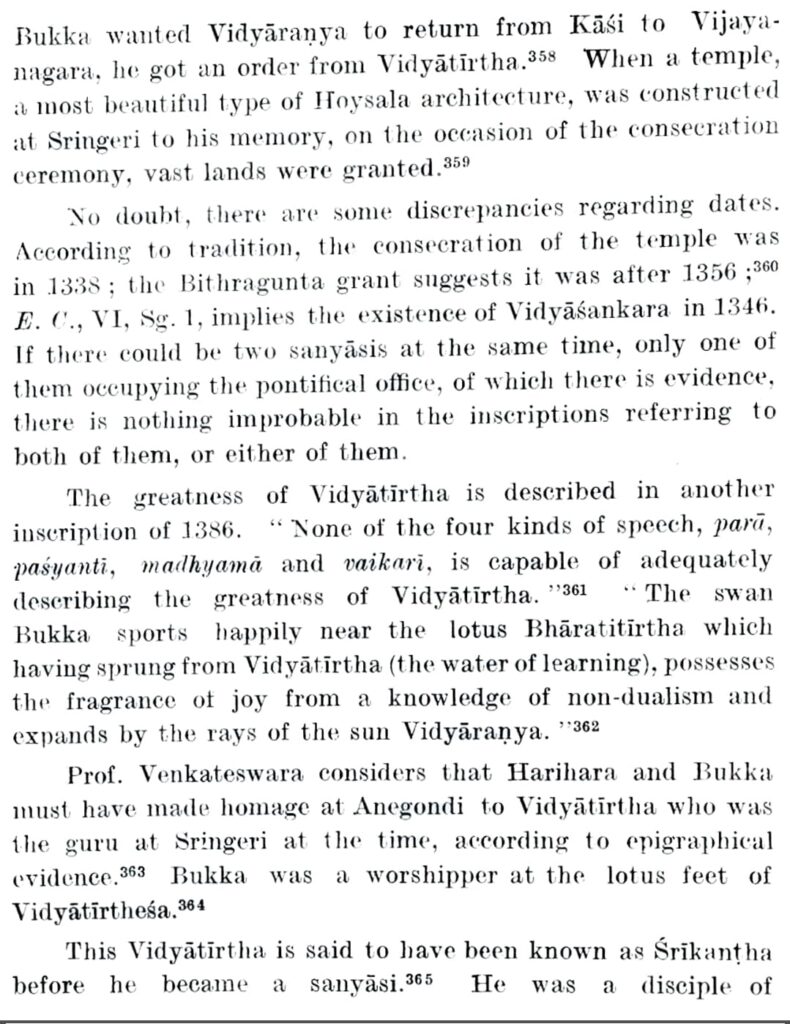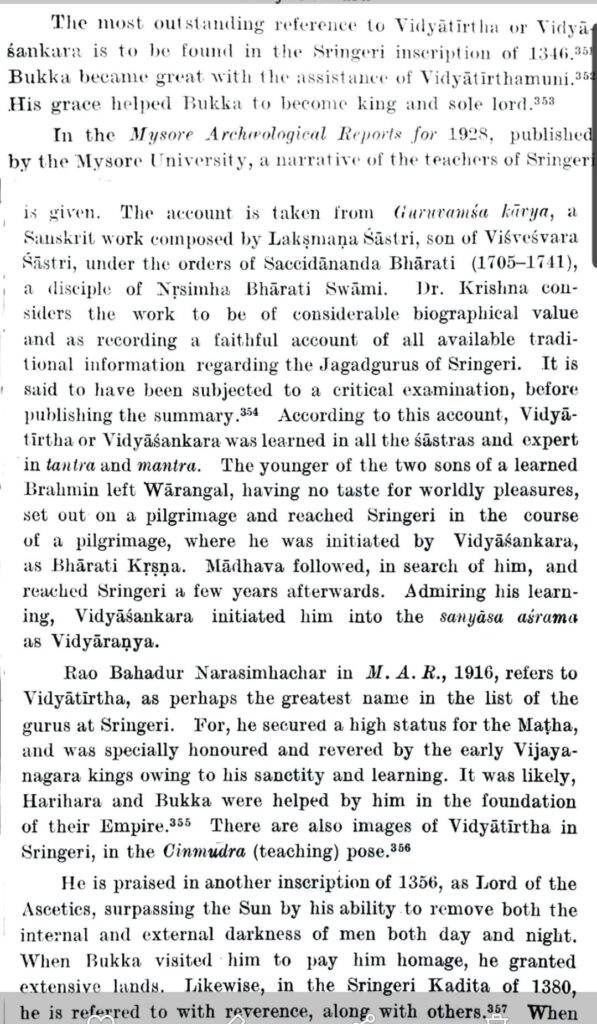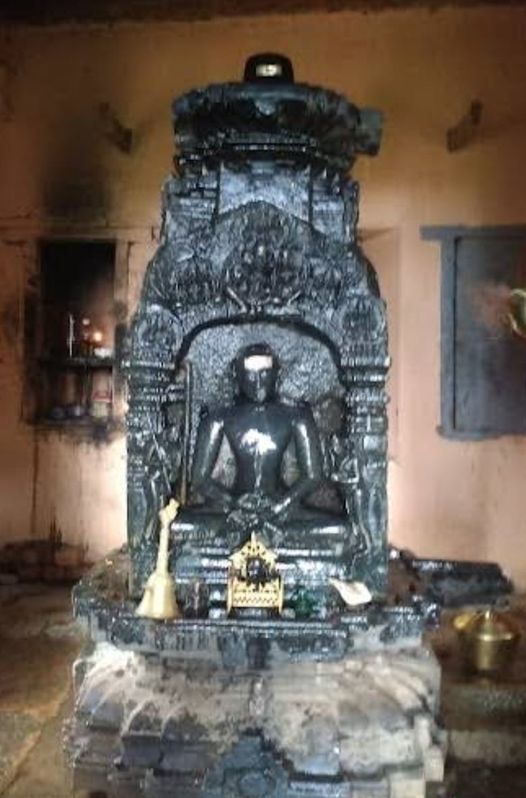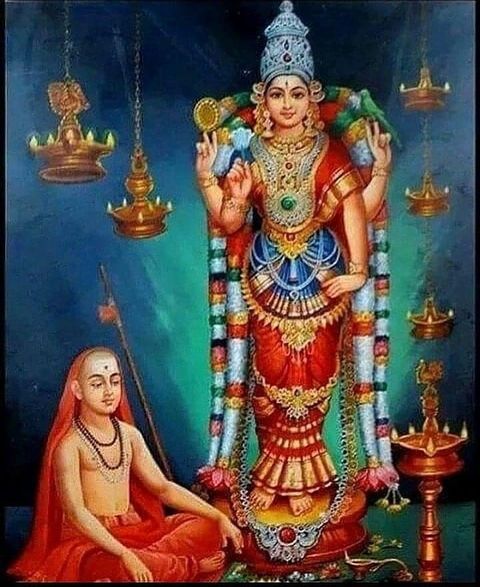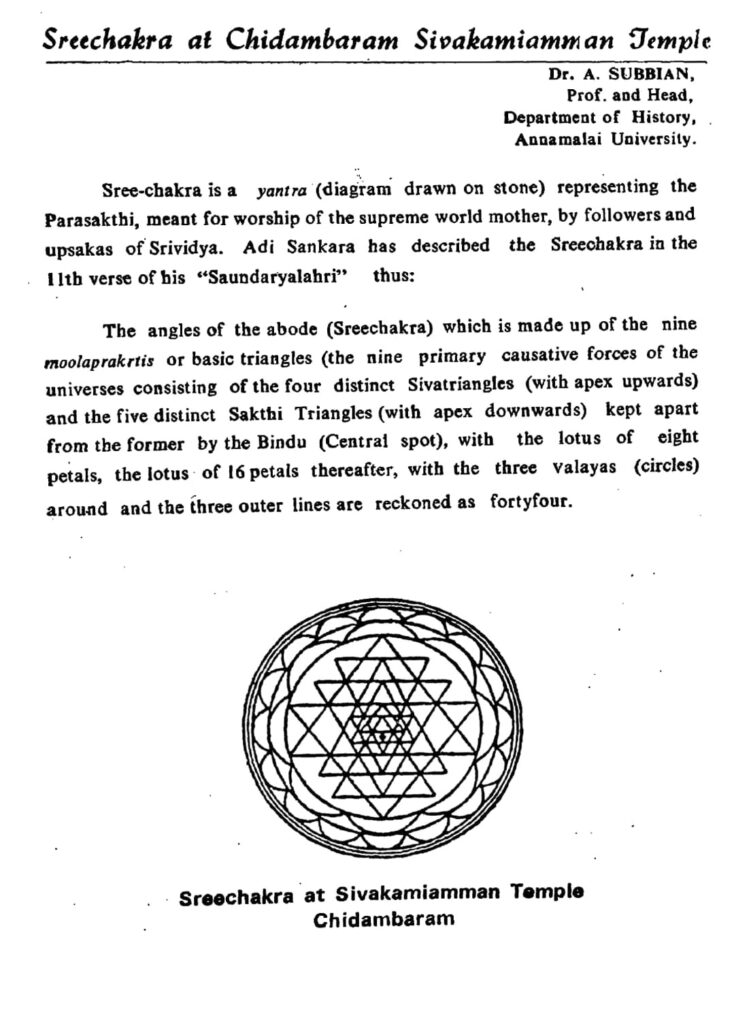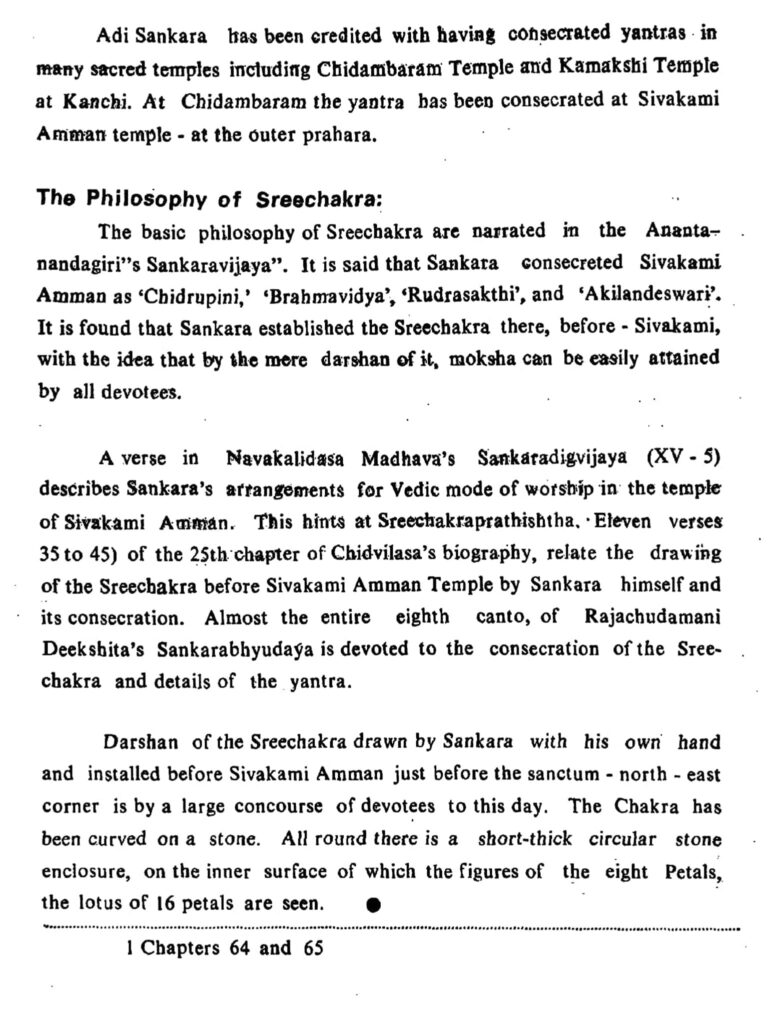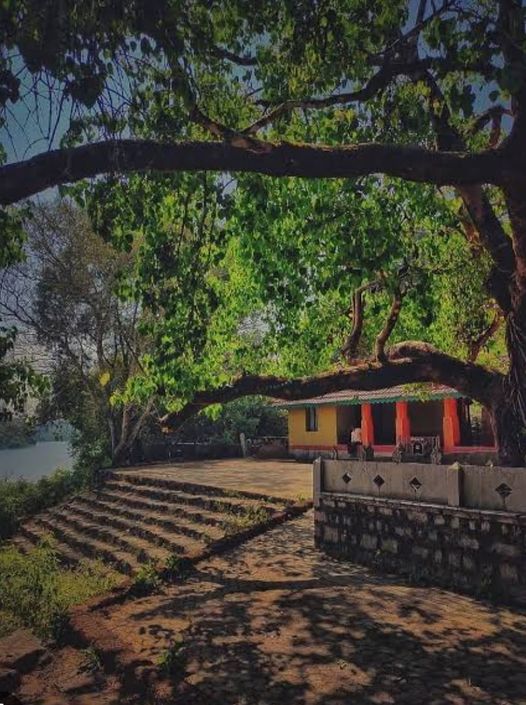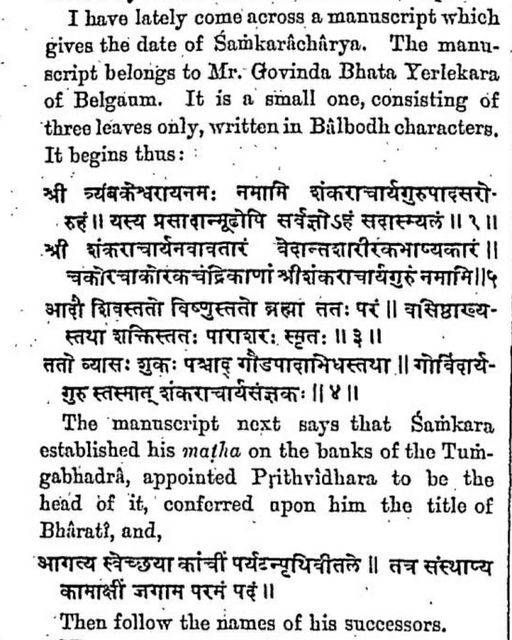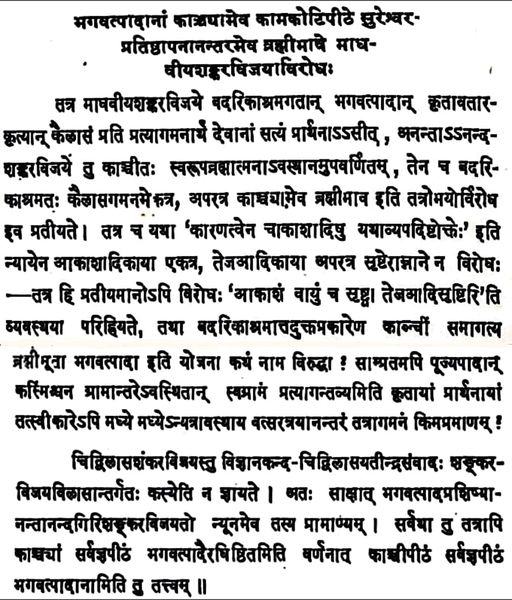
Vidvan Shri. N.S.Ananthakrishna Shastri in the appendix to the edition of Brahmasiddhi – Bhavashuddhi and Abhiprayaprakashika of Chitsukhacharya, published in 1963 says the following about the Siddhisthala of Shri Adi Shankara Bhagavatpadacharya.
There is no conflict or virodha between taking the brahmibhava of Shri Shankara bhagavatpada in Kanchipuram after the anointment of Shri Sureshvaracharya (with what is said in the Madhaviya).
In the Madhaviya Shankara Vijaya, Shri Bhagavatpada who came from Badarikashrama, after His avatara karya, returning to Kailasa, the prayer of the Devatas pray to Him. In the Anantanandagiri Shankara Vijaya, the brahmibhavam in Kanchipuram is described. Due to this – in one place we have the ascent to Kailasa in one and in another the aikya in Kanchipuram itself is said. This may seem like a conflict.
According to what is said in Brahmasutra,
“कारणत्वेन चाकाशादिषु यथाव्यपदिषोक्तेः” (Although there is a conflict of the Vedanta texts as regards the things created such as ether and so on, there is no such conflict with respect to Brahman as the First Cause, on account of being represented in one text as described in other texts). Likewise, the merging with the akasha in one and the merging of tejas and others elsewhere – as explained in the बस्तुख्यातिविघातिवादितिमिरं नैष्कर्म्य सिद्धिस्फुट- व्याख्याचन्द्रिकया विधूय सुधियां सद्दृष्टिमुन्मीलयन् । अन्तः संभृतशान्तवेदनसुघोहयोतः समुद्दद्योतते – सर्वज्ञाश्रमचन्द्रमा त्रिजगतीसर्वज्ञचूडामणिः ॥creation.
There even if there is an appearance of conflict, “The creation of Aksha and Vayu and then Tejas and others” – is resolved by this sequence.
Likewise, how is saying that from Badarikashrama, coming to Kanchi, Bhagavatapada attained aikyam be a conflict? Even now, great sannyasis, when they are in another grama accept the prarthana of devotees to come to one’s grama, and in between stay for a few years in the middle in various places and then arrive there? This being the case how does the stay in between make the final destination invalid?
It is not known whose work Chidvilasiya Shankara Vijaya in the form of a dialogue between Vignanakanda and Chidvilasa in the course of Shankara Vijaya Vilasa is. Therefore it has to be taken as a lesser pramanam than the Shankara Vijayam of Anantanandagiri. However since it is said there also that Sarvajnapitham is in Kanchi, and Shri Bhagavatpada ascended the SarvajnaPitha is said there as well, it is clear that Kanchi Pitham is Sarvajnapitham of Shri Bhagavatpada.

